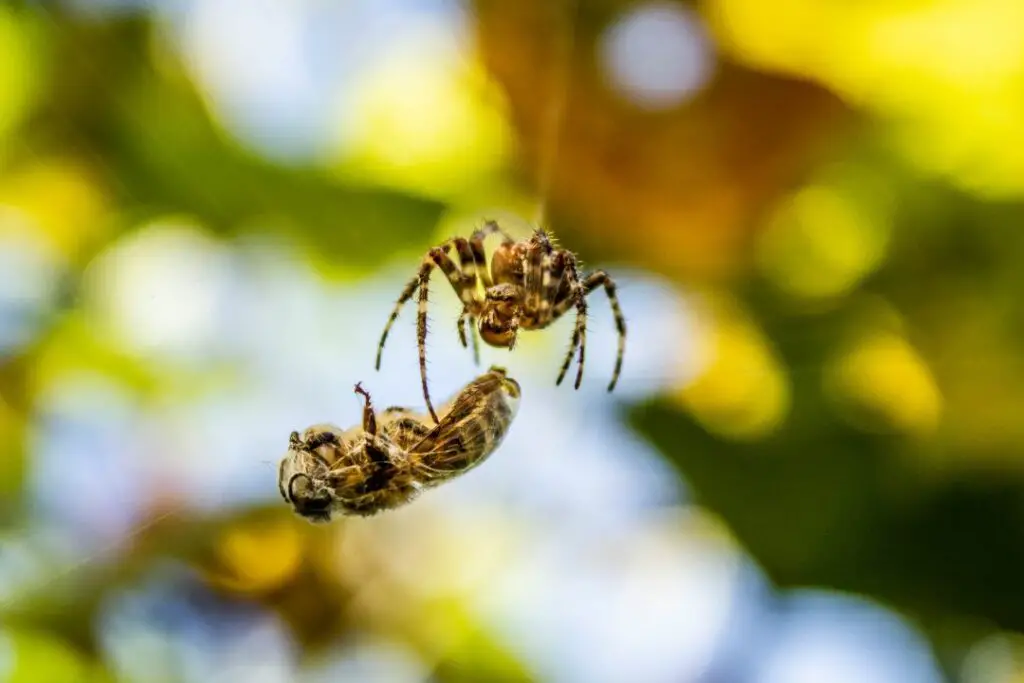Yes, some spiders do eat bees. Orb-weavers, jumping, wolf and crab spiders will all hunt and consume any unfortunate bees that cross their path.
Arachnids are some of the most adept predators in your garden, employing a whole range of tactics to catch and kill their prey.
Let’s look at what happens when bees draw the attention of these fascinatingly terrifying insects.
Which Spiders Eat Bees?
Let’s meet some garden spiders who will happily snack on an unsuspecting bumblebee if given the chance.
Want to meet some other hunters in your garden? Head over to our guide on what kinds of animals eat bees.
Orb-weaver spiders
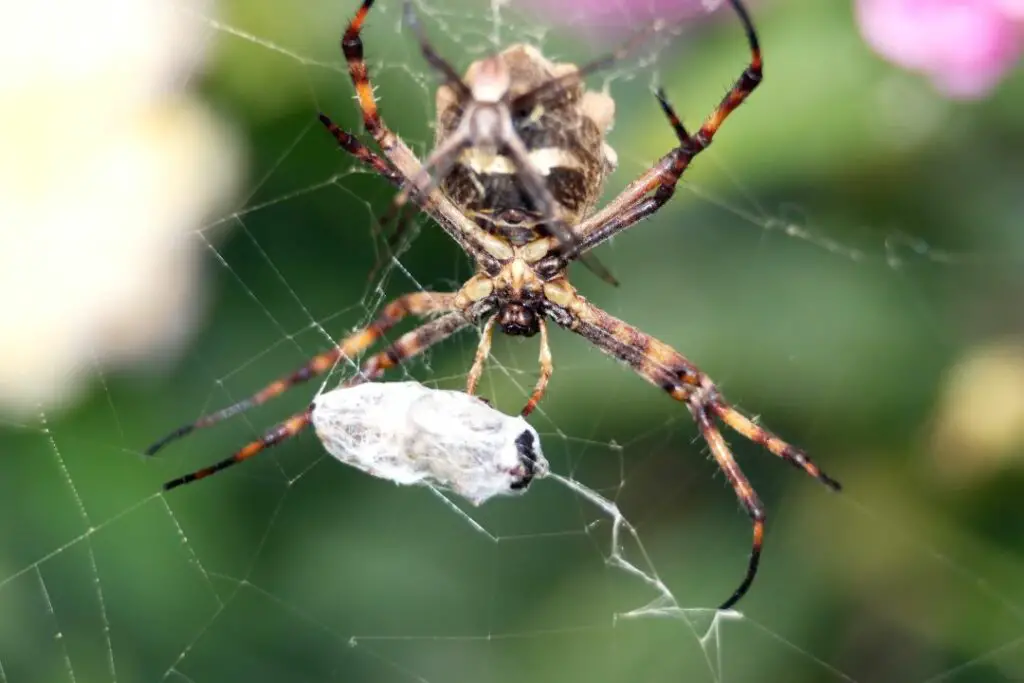
Appearance: Vibrant and intricate, with a patterned abdomen and long, slender legs.
Nature’s master weaver. These guys spin intricate webs often found between plants. They’re like the fishers of the spider world.
They cast their nets (webs, in this case) and lie in wait. It’s dinner time when a bee, fly, or moth gets caught.
Sticky threads entangle the prey. As it struggles, vibrations run up the threads, alerting the resident spider.
In a flash, the spider scuttles to dispatch its prey with a fearsome bite that injects its potent venom.
This venom immobilizes the bee and breaks down its insides nearly immediately.
Once the bee is immobile, the Orb Weaver can enjoy its well-earned meal or spin it in silk for a later snack.
Crab spiders
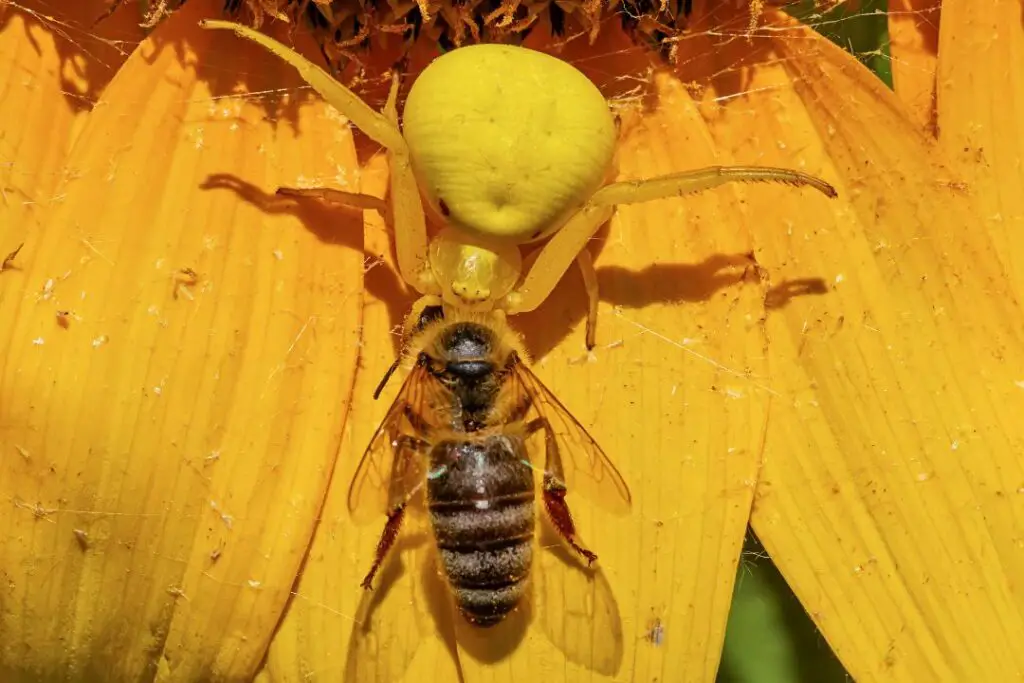
Appearance: Mimicry masters, often coloured white or yellow like the flowers they hide in, with crab-like legs.
This spider’s secret weapon is its incredible ability to blend in. Their bright yellow colouring means they can camouflage themselves against flower petals and fruit.
When an unsuspecting bee lands in a hunt for nectar and pollen, the trap is set.
These ambush predators stay completely still until the bee moves within striking range. Instantly, it wraps its front legs around the bee and sinks its mandibles into the insect’s body.
Once captured, the Crab Spider’s venomous bite will quickly paralyze its victim, ready to be consumed.
But its most fantastic characteristic is its ability to reflect UV rays, the same signals bees use to find nectar-rich flowers.
This means that flowers with crab spiders lying in wait are much more likely to be visited by unknowing bees and insects.
The video below shows a Flower Crab Spider in ambush stance, waiting for its next meal.
Jumping spiders
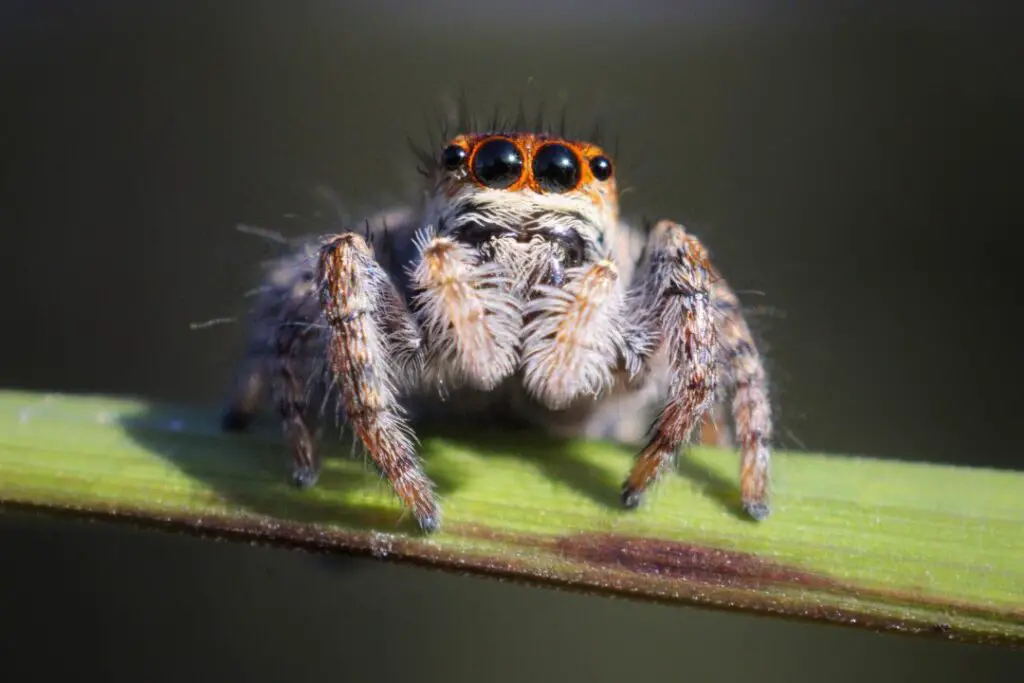
Appearance: Small and furry, with large, forward-facing eyes that lend them a cute appearance.
This species doesn’t spin webs. Instead, it stalks its prey before leaping into action.
Despite their small size (body lengths are no longer than 15mm), they have the best eyesight of any spider species.
They use this incredible vision to spot prey like wasps and bees.
Once locked on, they use their powerful hind legs to launch at their target with staggering speed.
They use their fangs to deliver a venomous bite, immobilizing the bee so the spider can enjoy its meal without the risk of a counterattack.
After the bee is immobilized, the jumping spider typically retreats to a safe location to consume its prey.
Like other spiders, it will suck the liquefied insides out of the bee, thanks to its venom doing the digestive work.
Wolf spiders
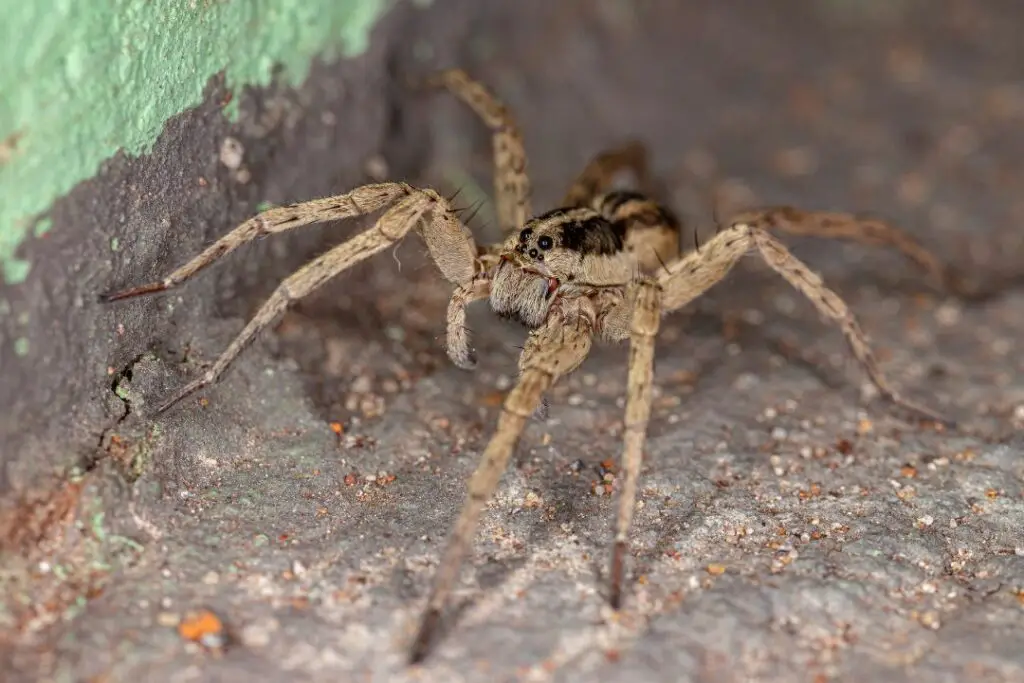
Appearance: Earthy hues of brown or grey, with robust bodies and a camouflage pattern, often mistaken for tarantulas.
These ground-dwelling hunters stalk their prey with cunning and agility, nothing short of extraordinary.
The Wolf Spider doesn’t rely on a silky trap. Using its excellent vision and fast reflexes to hunt, it relies on speed above everything else.
Once the wolf spider detects a bee, the drama unfolds.
It stalks its prey carefully, moving closer until it’s within striking distance. Then, with an explosive burst of speed, it pounces!
A solitary hunter with tactics as sharp as its fangs, this spider is often found in the home and residential areas in the hunt for food.
Do Bees Ever Eat Spiders?
No, no known species of bees actively hunt and consume spiders. Bees are primarily herbivores. They feed on nectar and pollen from flowers.
They’re not built for hunting; they aim to collect food to return to the hive.
Do bees ever kill spiders?
Bees can and will kill spiders if they threaten the hive or nest.
They rely on sheer numbers to overwhelm and repeatedly sting the intruder.
While spiders have no trouble dispatching a single bee, this mass assault is a very different story.
Their powerful mandibles can only tend with one bee at a time, and with hundreds of attackers, it’s only a matter of time before the bees overpower the much larger insect.
In Conclusion
In this microcosm of life, spiders take on the role of fearsome predators.
Whether it’s the orb-weaver’s masterful web, the crab spider’s splendid camouflage, or the wolf spider’s ground-based tactics, each species employs a unique method of predation.
Though the bees are generally the prey, they even have moments of triumph, rallying against roaming attackers.
Don’t miss our other deep dives into insect life below, packed with fascinating insights into the unseen world in our gardens.

